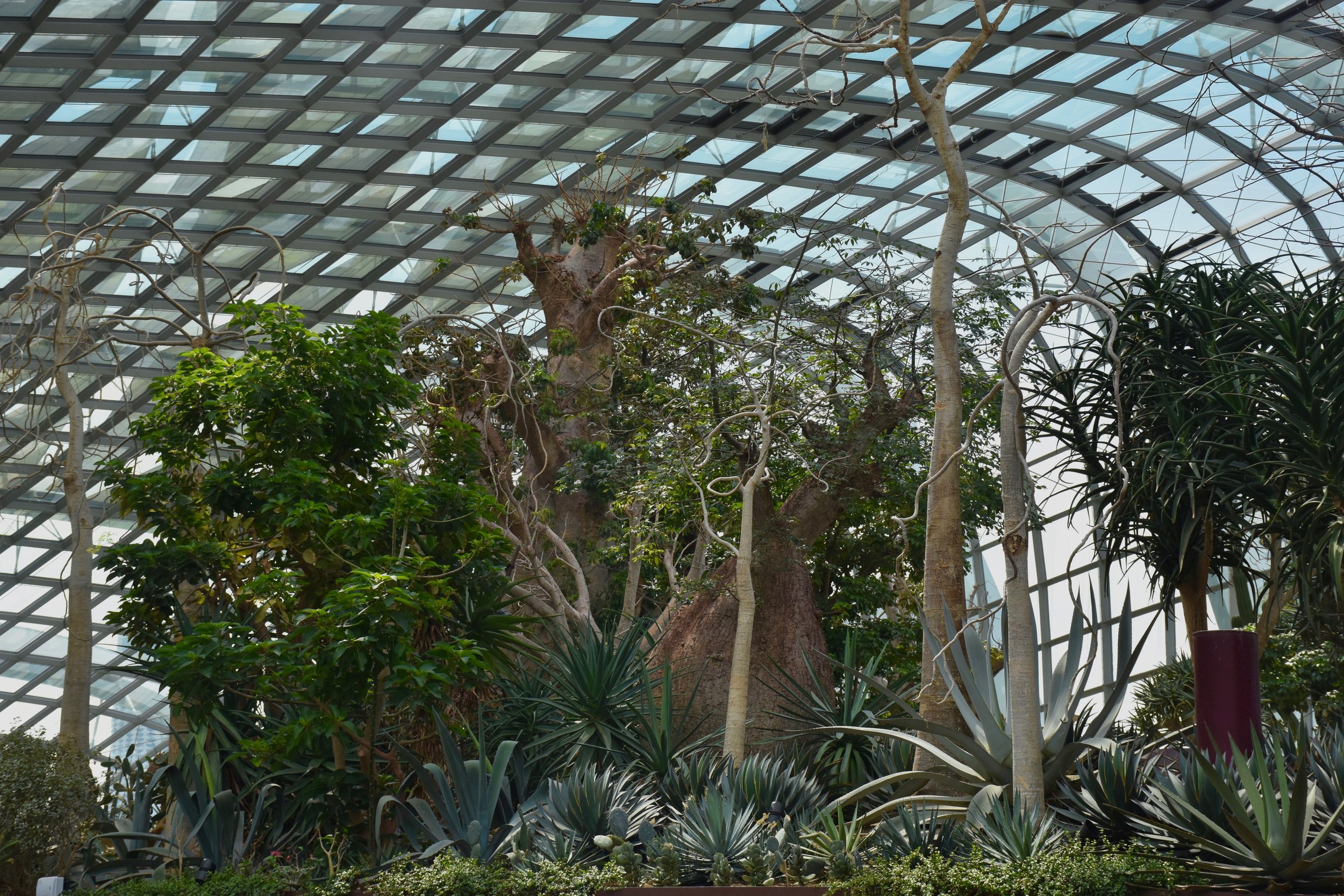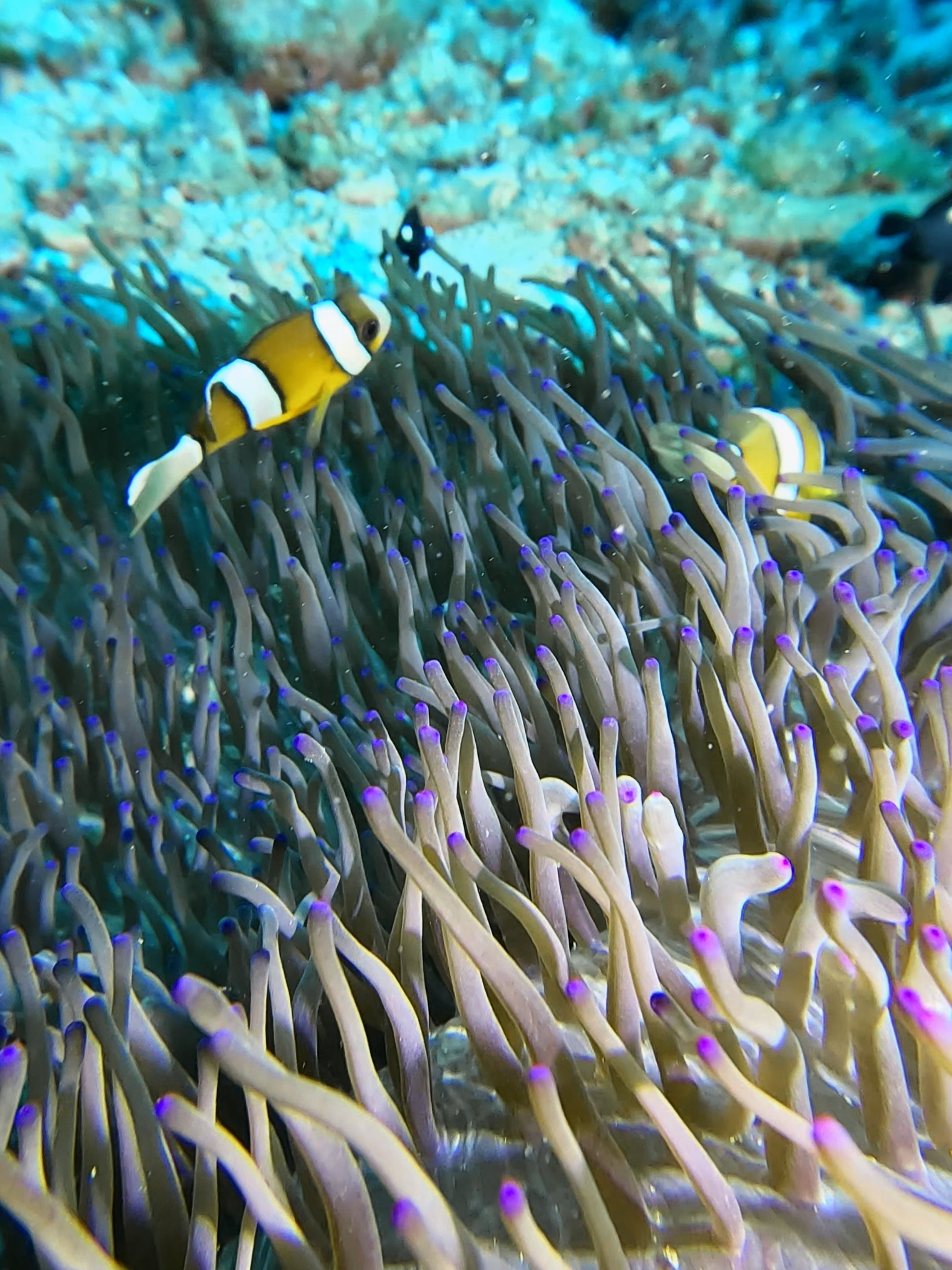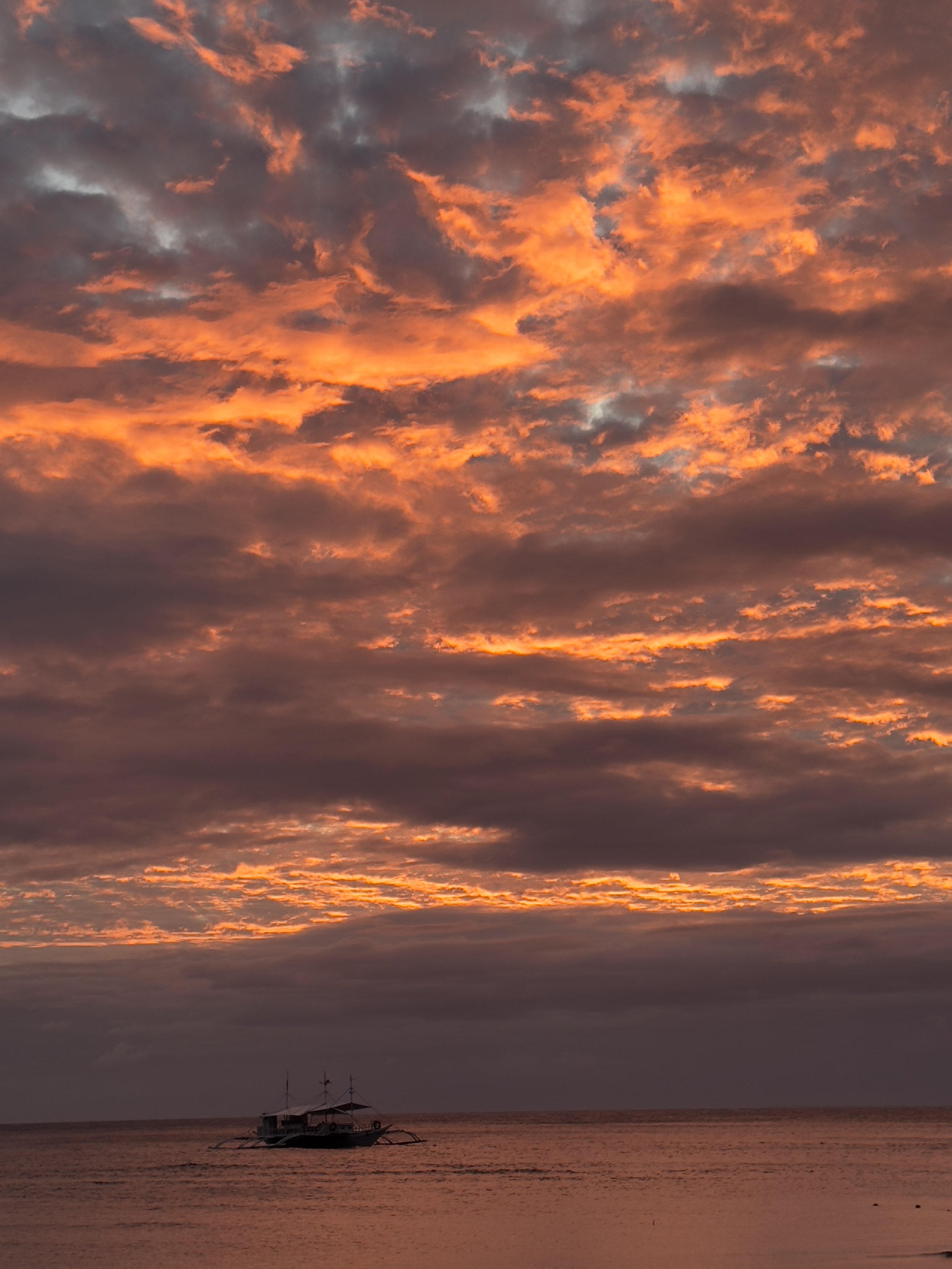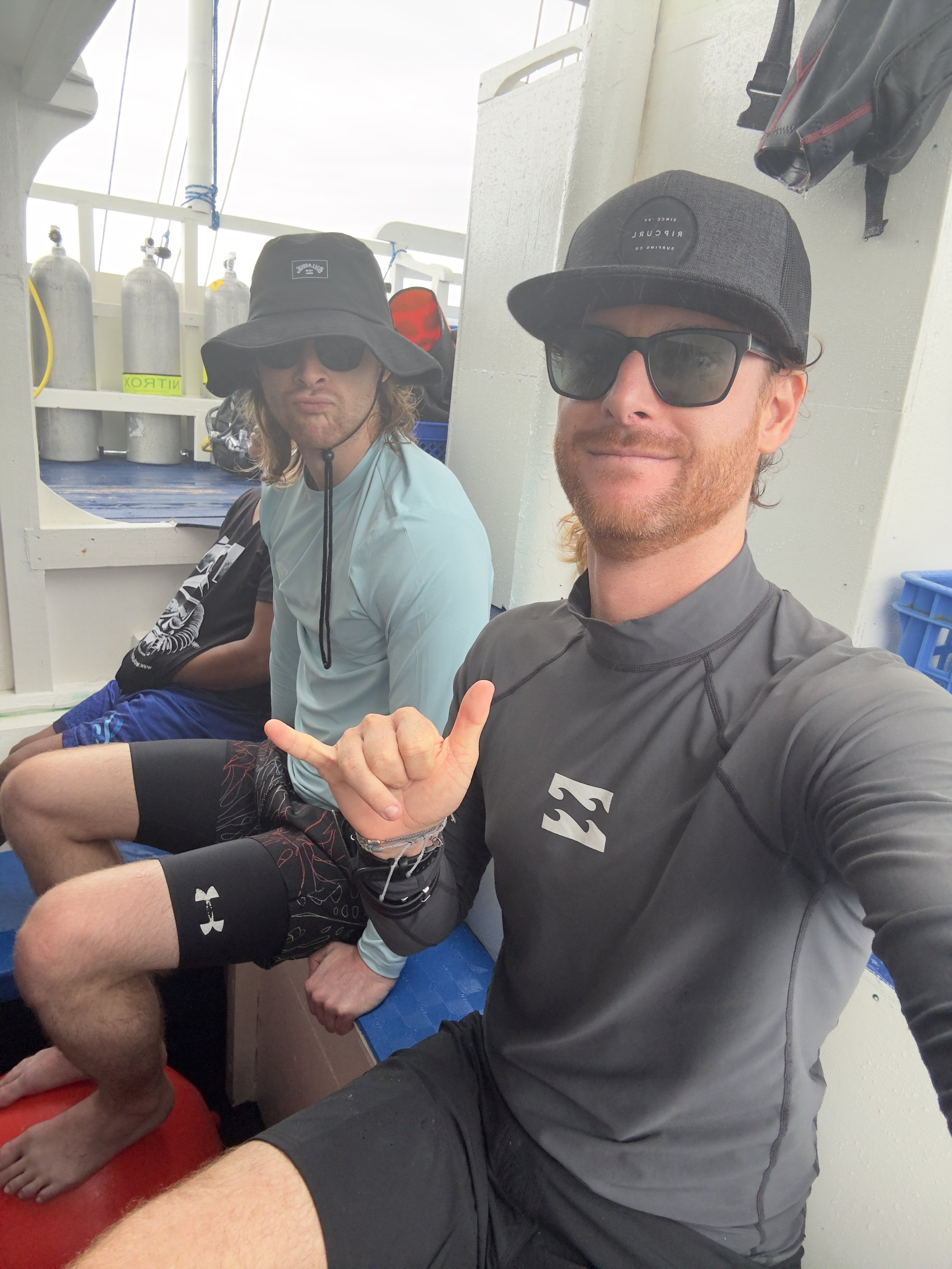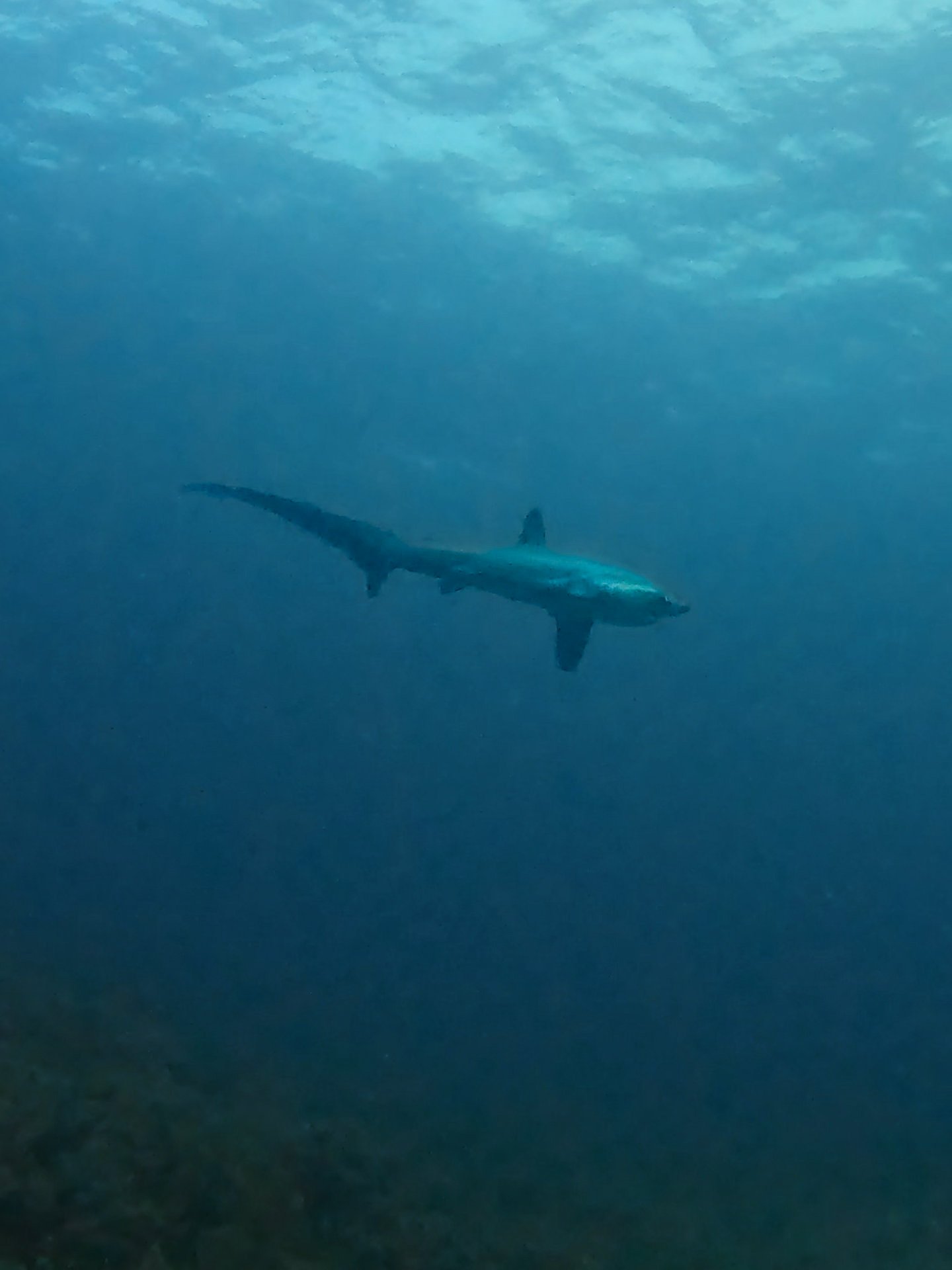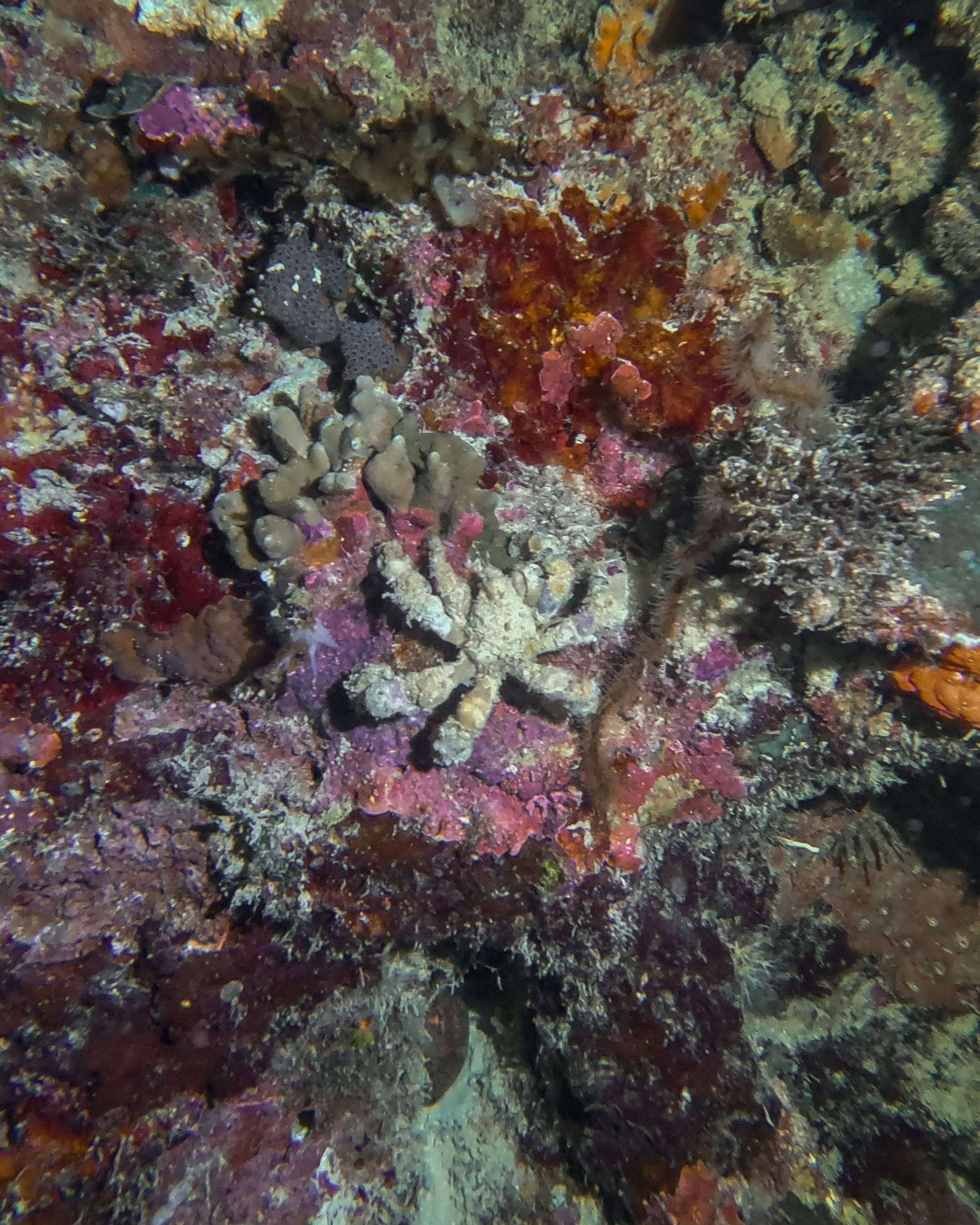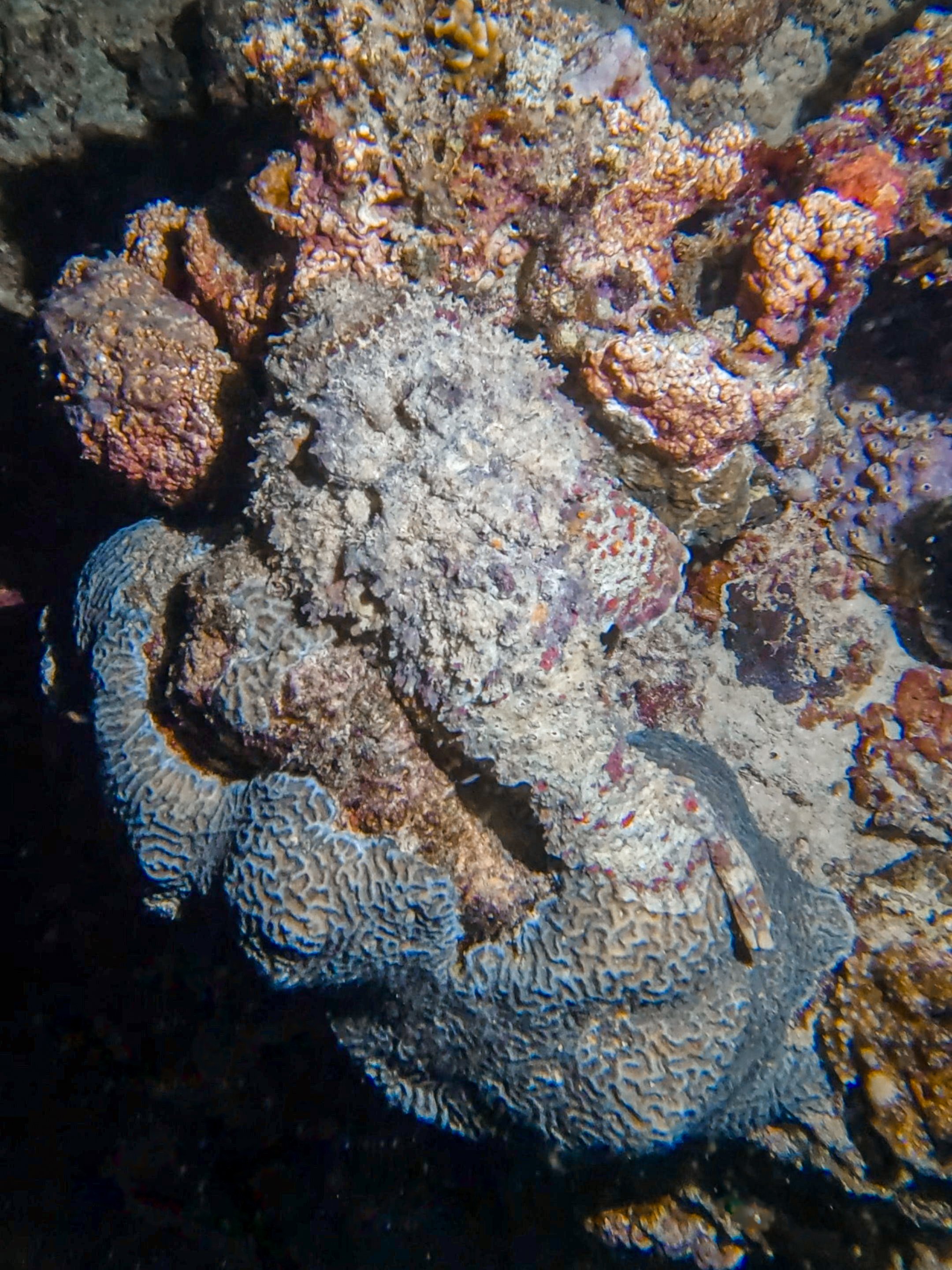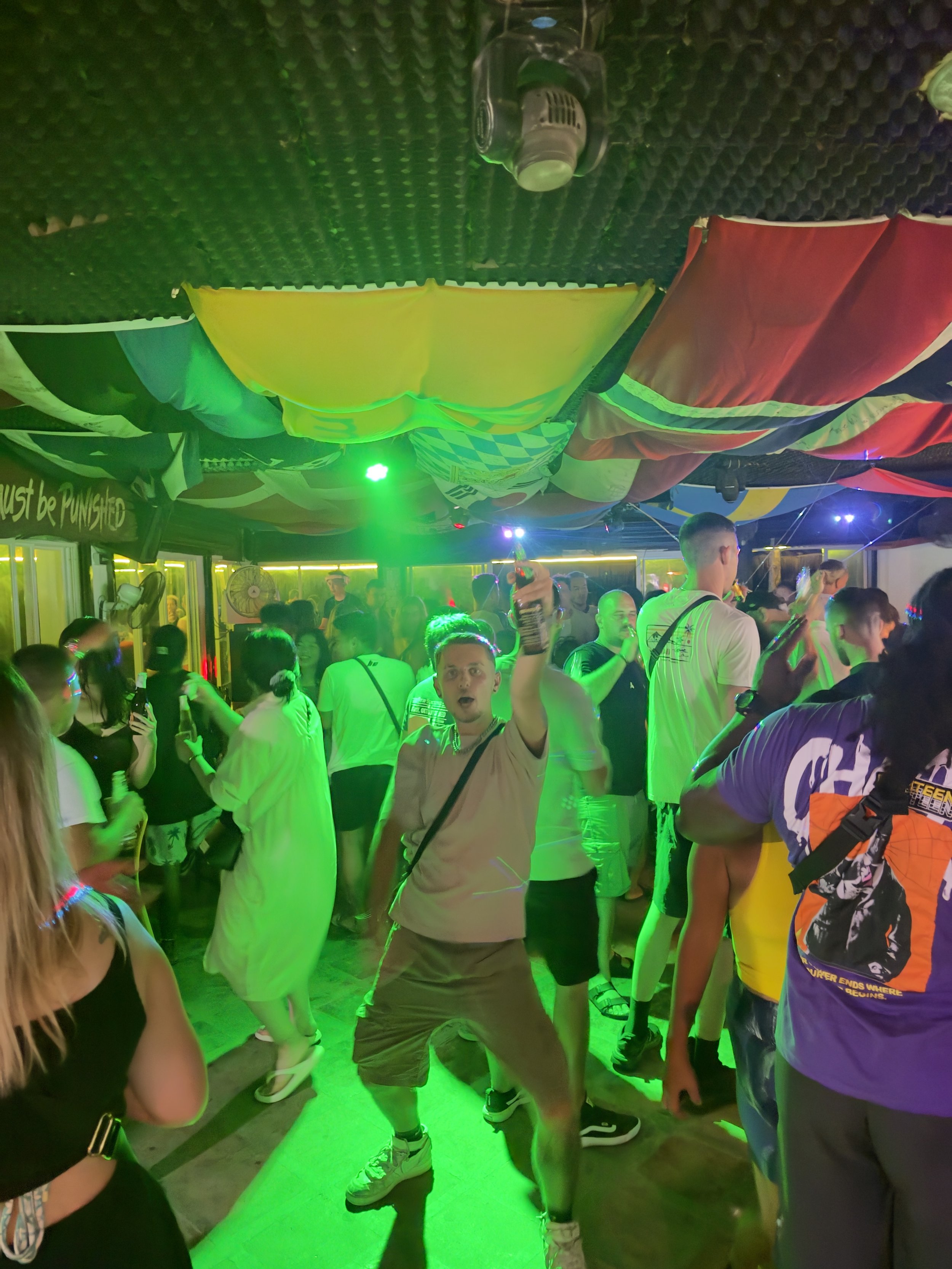Dive Into Cebu
Phillpines Blog Part 1
January 26th
I have been working abroad for quite a long time now, and typically, the jobs I get are random, and I never knew what opportunity is coming next, so I have needed to keep my schedule open. This has made it difficult for me to see my family or for them to visit me and almost impossible for us to travel together. When I joined the Ritz-Carlton Maldives and had stability in one destination for once, my mother, brother, and I planned a trip to a location we have always wanted to visit. It is a destination full of endless island hopping, pristine reefs, wonderful culture, and a great backpacker scene. This marvelous country is the Philippines.
In the early morning of the 26th, I took a red-eye flight from the Maldives to the amazing city of Singapore. This was not my first time in Singapore. I used to work for a university in Thailand that was sponsored by the Singapore Zoo and visited the country eight years ago. Back then, I was impressed by the green architecture and how the city incorporated the rainforest into its urban planning. It is the most amazing sustainable city on the planet.
I arrived around 5:00 am and had 2 hours to kill before my mother and brother, Casey’s plane arrived. We met up and my mom hugged me forever as it had been two years since I had seen her. (I was fortunate enough to have seen my brother when he, my father and stepmother visited me in the Maldives in November). We opted to have an extended layover in Singapore and visit some of the iconic areas in the city. After checking into our hotel, we made our way to the Gardens by the Bay in the Marina Bay area. The Gardens by the Bay are truly something you cannot miss when visiting Singapore. The urban flora planning is breathtaking, and the iconic super trees are spectacular. We wound our way around the super trees to purchase our tickets for the indoor cloud forest, another fantastic engineering marvel. As you enter the door, you are met with a 35-meter-high waterfall, one of the world's tallest indoor waterfalls.
Following the path which takes you to different sections, we reached the orchid haven, which contained a collection of some of the most beautiful orchids I have ever seen.
Continuing upwards, we eventually reached the top of the forest, and my favorite section, the Lost World with all the carnivorous plants. This area features different exhibits throughout the year, and this year, there were gorgeous white glass floral sculptures.
We then made our way to the flower dome, which contains separate gardens of plants worldwide. They do an incredible job representing the taxonomy of the diverse types of plants. My favorite section here is the baobab trees! The country was getting ready for one of their biggest holidays, the Chinese New Year, so there were huge displays of floral dragons and Chinese symbols.
That evening, we ventured into Chinatown to get great street food before hitting our beds as we needed to get to the airport early to catch a flight to Cebu City to our first Philippine destination.
January 27th
Our flight left at 7:00 am and got us into Cebu City at 10:30 am, where we got SIM cards and arranged for a driver to take us to the north of the island, a 117 km journey (71 miles) that looked like an easy trip but ended up being a 4-hour journey. The road around Cebu is just 2-lane and the entire population outside of the city lives along the road, along with their chickens, dogs, pigs, and other assorted animals we dodged along the way. We arrived at the Maya port for the ferry that would take us to one of the country's top diving destinations, Malapascua Island. We purchased our tickets for the ferry crossing feeling lucky because the workers at the port said that yesterday, no boats crossed because of the wind. We traveled with huge bags of raw butchered chickens and other assorted groceries as no deliveries had been made yesterday.
We arrived and had to walk a plank over the water to the beach and then followed a couple of porters who carried our bags on their shoulders down the beach to our hotel. We were staying at the Malapascua Exotic Island Resort and planned to dive with Evolution Divers, which after doing our research seemed to be the best on the island and was located next door. We checked into the hotel, had dinner and drinks but missed out on a night dive as the wind was still pretty crazy.
January 28th
The bucket list attraction on this island is to dive with thresher sharks as they frequent an atoll, where you have a 99% chance of seeing them. There is also great macro and pelagic marine life. We did our checkout dive in the morning at 10:00 after most of the boats had returned from the early morning thresher shark dive. Due to the wind, we did not have many options, so we ended up diving on the north of the island in a cove that was protected from the east winds. This dive was more of a muck dive, but it also helped us get comfortable in our rental gear. I always bring my dive computer, mask, fins, snorkel, and rash guard and rent a BCD and regulator and my mom and brother did the same. We also needed to rent wetsuits. After diving in the Maldives, which at its coldest tends to be 27 degrees C, jumping into water around 25 degrees cooled me off quickly, so I was grateful wetsuits were available here. We opted out of the next dive as it was getting windier.
That afternoon, I went on an adventure by myself to explore the island. I followed the beach and then went inland and walked through the villages. Eventually, I reached the north tip of the island before turning back and flew my drone but the wind made me bring it down but ot after getting one photo.
The sunset was beautiful, but the wind was too much for my drone.
I ran into some random people while walking around, and they invited me to the town market for a beer, and we just chatted away. The village dogs gave us begging puppy eyes as they seemed to know that tourists would give them food.
Our family had a good night with tasty food and conversation. It was nice chatting in person with my mom since I had not seen her for two years. We went to bed early because we were scheduled to do the thresher shark dive, and we had to be at the dive center at 04:30am.
January 29th
We were up at 4:00 am to prepare for our dive. We got briefed at 4:45 am, where they explained that the boats go to a different pinnacle now because tiger sharks had taken over the pinnacle where everyone dove previously. Threshers do not like tiger sharks as the tigers can eat the Threshers, so the new dive site for the Threshers was about 25 minutes farther out. We got on the boat around 5:15 am. It was still dark while we were on the sea, but we could start to see the glow of sunrise. Because of the storm system in the area, it was a lot colder than I imagined, so the waves were spraying over the front of the boat, making everyone cold and wet, so all of us divers hunkered in the center area to get out of the wind and the sea spray.
Ours was the first boat to arrive at the dive site, and that is a wonderful thing about Evolution Divers; they are the first boats to get out to the atoll. We got our gear on, and right as the sun started to peek over the mountains, we jumped into the water. Thresher sharks can be skittish, so this site is for advanced divers only with experience and buoyancy control. There are two areas where the sharks hang around—a shelf at 12 meters and another one at 18 meters. The plan was to head to the shelf at 18 and watch the sharks emerge from the deep. I have seen one thresher shark in the Maldives before, and we were deep, so seeing them in shallower water would be a treat and is what makes this place even more special. The water conditions were not ideal due to the windy weather system. The water was green and contained floating algae and jellyfish but as we got to the edge, after 5 minutes, a dark silhouette emerged from the depths, and we saw our first thresher and understood why these sharks are truly incredible to behold.
In photos they appear small, but actually their body size is around 1.5 meters long, and add that spectacular tail which is the length of their body, and it gives them such a graceful presence. Watching them move through the water with that giant tail moving back and forth is almost angelic. There are three species of thresher sharks in the world. There are the Common thresher shark, the Big Eye thresher shark, and the Pelagic thresher shark, which is the species found in Malapascua. These are the smallest of the three species. What makes threshers unique is the special function of their massive tail. These sharks are the only ones not to use their mouths to hunt, they use their tails. The sharks swim into a school of fish, whip the tail, slap a fish, and stun it while they maneuver back around to eat it. That tail is incredibly formidable, and some fishermen have been unfortunate enough to get smacked by it when they unintentionally catch these sharks.
One shark wound its way up the pinnacle, then two, and then more started moving around the pinnacle, stopping at different spots where they liked to get cleaned. After an hour, we surfaced for our interval. As we got ready to get back into the water to swim with the sharks again, more boats were showing up as this is the most popular dive site in the area. It was possible that with more divers, the sharks could evade us by staying out of sight. Luckily, when we got onto the pinnacle, there were still eight of them around us. We were shallower this time and I was able to video one of my best encounters. A thresher swam right over my head, and the video shows how long and incredible their tail is.
Another thing I love about these sharks is that they have one of the silliest facial expressions of any shark, and it is hard to keep yourself from laughing underwater when they get close to you. Down on the rocks, I spotted one of my absolute favorite animals, the peacock mantis shrimp, and watched him move around a bit, but he was not in any mood for a picture, so I only got a proof shot. Next this this photo is a better photo from somone else.
I am used to diving with stinging creatures because I do a lot of night snorkels in the Maldives, but as we were facing the current, I saw this long strand of jelly-looking stuff and ducked my head to get out of the way, but the strand wrapped around my neck. The sheer amount of pain I felt was like being stung by 10 wasps. I have never spat out my regulator before while diving but holy crap that hurt and the stingers wrapped around my neck, so I had yank them all off. Once we surfaced and made our way back to the boat, I had to use vinegar to get the stinging down. We headed back to Malapascua and were extremely excited that we had accomplished seeing our target shark! That evening we ate well and went to bed because we had been up since 4:00 am and we had another big dive the next day.
January 30th
Today, we met at the dive center at 8:00 am to go to the famous dive site called Gato Island. This site is great for macro and pelagic marine life and has a nice cave to swim through that goes under the island. It took us about 45 minutes to reach the site. It was another windy day, so we got our gear on, and I even double-layered my skinsuit underneath the 3m wetsuit so I could be warmer in the water. It was wavy on top of the water, so we quickly dropped into the water and went under. Visibility was not good at all; it was very green, but as we entered the cave, I knew I would have a great dive! I was already spotting nudibranchs all over the place. The Maldives is all about the big stuff, and being here for me was about smaller creatures. The current was quick and took us under the island in an ancient lava tube. We soon came upon the largest white tip reef shark I have ever seen just lounging in the bend in the cave. It was a female due to the size, and she was easily 1.8 meters in length. On the ground, I spotted a devil scorpionfish with a more upturned jaw than the ones I used to see. This one looks more like its deadly cousin, the stonefish, but it does have a few differences.
I then spotted two beautiful nudibranchs. We came out of the tube on the other side of the island and came to a rock outcropping, with stunning corals and a lot of fish life. The first animal I spotted was a gorgeous green peacock mantis shrimp, and I got a decent shot highlighting its colors.
We then moved on, and our guide signaled to look down and there was a cuttlefish camouflaged in a seagrass clump. Its tentacles were perched to look scraggly and blend in with the seagrass. But you can’t fool me, and while photographing this beauty, I spotted its mate, who was close by.
We left the cuttlefish to do their cuttlefish things and moved on. I spotted lionfish, Reef catfish, banded pipefish, and our guide pointed to something in the wall. As soon as I saw the fiery red tentacles waving back and forth, I knew it was an electric fire clam. This is my lifer one! They have a special reflective thin membrane on their mantle that allows sunlight to reflect, like electrical flashes. They are very cool creatures and something I had always wanted to see.
My mom pointed out something tucked under a rock, and as I got closer, it was a small shark resting on the bottom. I had never seen this shark before but knew it had to be in the cat shark family. Looking it up after the dive, I learned it was a Coral catshark. After that, I spotted more nudibranchs and puffers.
Then my mom was waving her arm in the air and something around 30 cm long was approaching us that looked like an eel initially, but I immediately knew it was a banded sea krait. These amazing snakes are adapted for life at sea. Unlike true sea snakes, they still go onto land to sleep and digest meals. One of their favorite foods is eels. This little one was constantly moving, but I got some shots.
We then exited the water and had a Philippine lunch of chicken skewers, rice, fruit, and veggies.
My brother and I jumped in for our second dive, with mom opting out because she could not get warm. Right off the bat, I found some beautiful small lionfish and sea hare. We then moved on and spotted banded pipefish.
The dive guide gave the signal for the sea horse, and tucked in a soft coral patch was a beautiful light colored sea horse. We do not have them in the Maldives, so it had been a long time since I had seen a sea horse. There was another one close by with a brown and black pattern.
Then the guide moved down and pointed at the sand bed, and inside its burrow lay a tiger mantis shrimp, and this one was colossal. They can get up to 40 cm long and have extremely fast strikes that impale fish with their spiked arms.
I got a nice shot of it because I was using my GoPro 11, with a backscatter macro lens and in my hand, I was holding an orca torch for light. This allows me to get more detail with my photos and makes it easier for better GoPro photos of smaller creatures while bringing out the true colors. On the way back, we spotted Robust ghost pipefish, one of my favorite camouflage experts. They swim laterally and sneak up on unsuspecting prey, looking like a piece of leaf or seagrass. There were two of them, clearly male and female. I usually see this species in pairs. They were a nice red brown color. We spotted even more macro creatures and then surfaced to return to the island.
When we returned to the resort, finally, the wind died down enough for me to fly my drone and get aerial views for the first offical time in the Philippines.
January 31st
The sunrise was beautiful, we gathered our things and with our bags precariously perched on the backs of motorbikes, we headed to the ferry port to catch a boat to the mainland.
Did I mention there are no cars on Malapascua? Only scooters and motorbikes with small narrow paths between the buildings. We were excited to be moving on to the bustling city of Moalboal for the sardine balls and its wall diving. We got to the mainland around 9:00 and met our same driver, who had driven us from the airport a few days back, and it was a long 5-hour car ride south around the island to Moalboal. We checked into our hotel and quickly got our snorkel gear together to head out to see the sardines. The shelf, sardine balls and some dive sites are literally just a short walk in the water away from town. We found a semi-large school of sardines, but the water was murky due to a recent storm.
We checked in with our dive company, Savedra Dive Center. They are a solid dive operator, and their facility is great. I loved all the photos of macro life surrounding the walls in the reception area. We discussed the dives we hoped to do and planned to go to Pescadero Island, do a sardine ball dive, and a night dive. I asked what the chance was to see a frogfish, and the woman at the desk chuckled and said, " Don’t worry.” That evening, we ate dinner with my mom and then my brother and I went out for drinks and met up with other travelers from the hostel we stayed at that night.
February 1st
We met at the dive center at 8:30 am to get our gear and head to the boat for our Pescadero dive. At the site, we got our gear on, rolled back into the water, and made our way to the edge of the wall. The first thing I saw was a group of sexy shrimp. I have seen these shrimp all over, and they get their nickname because they twerk with their tails above them as they bob up and down. As we made our way down the wall and saw gorgeous corals.
As we made our way down the wall and saw gorgeous corals, our guide pointed to a yellow blob perched on a long finger of coral, and lo and behold, it was my first ever frogfish! This has been my white whale of underwater creatures. I have been looking for them for so long and never saw one in my 20 years of diving until this very moment. This one was around the size of a softball and was a vibrant yellow. It even gave me a stretch of its jaws. Frogfish are extraordinary fish and belong to a group called anglerfish, as they have appendages on their heads that look like a pole with a fleshy bit on the end to mimic a meal a smaller fish would want to eat. They are more of an ambush predator, so they have evolved to have hand-like fins that they use to grip onto objects to hold them in place to hunt prey. What I love most about them, aside from being so odd looking, is that they come in an array of colors. There are multiple distinct species of frogfish, but this one was the Painted frogfish, which has the most color variety of the species. After getting photos, I looked at a ledge not far away and spotted another one with more brown and yellow hues. Then, close to that one was an exceedingly small yellow one. I cannot believe I got to check off my ultimate species for the trip within the first 10 minutes of the dive.
Our guide made the sign for octopus and pointed under a ledge, and there was an octopus tucked under the ledge, hiding from us. We found nudibranchs, scorpionfish, and other cool fish and entered a cave-like area. Our guide pointed out an electric fire clam, and I got a great video this time.
Our guide pointed out an electric fire clam, and I got a great video this time. We moved up to a shallower depth for our safety stop, and on the way up, there was this long blue/ purple soft coral, and sitting inside was a stunning blue frogfish. This was a different species, as it was much larger, and most likely was the Giant frogfish. He was not in the best position, but I did get a good photo. We made our way to the top of the wall edge, and our guide spotted a patch of seagrass and lifted the leaves for me to see an incredibly small nudibranch species about the size of a grain of rice. We finished the dive and got on the boat.
The wind came up and as we were downwind from the dive resort, we never took our wetsuits off and had to put our masks on for the rest of the boat ride as the waves sprayed everyone.
We had lunch at a great burrito place and prepared for our afternoon dive. We took a boat about 15 minutes north of town and got into the water. Our guide pointed at a beautiful white, orange, and pink Carnation coral, my favorite coral because of their bright colors. He used his metal stick to point at something in the coral that was not the coral but had the same colors. Then my brain registered what it was because this creature was high on my list of animals I wanted to see. This beautiful ‘master of camouflage’ was a candy crab. I did not have the best macro lens, but I got a shot I was happy with, and we moved on. Our guide was super talented at finding all the amazing macro life. We spotted scorpionfish, orangutan crab and beautiful flatworms.
Flatworms are unique as they have both female and male parts, and they fight with their penises to decide who becomes pregnant. The loser gets stabbed with the sperm sack and becomes pregnant. We then looked under a ledge, and there was one of my favorites of the macro targets for divers—the ornate ghost pipefish. There was a large female and a tiny male. They were in a difficult spot to get a photograph, so we headed on.
I spotted two beautiful pink skunk clownfish moving about their green anemone. I always enjoy watching clownfish as they are always moving in and out and sometimes even charge at you, attempting to scare you off. I now knew how to look for frogfish and the things they like to hang out on, and about 5 meters away, I spotted a large one in a soft blue coral patch. This one was around the size of a small basketball. Due to the size, it was most definitely the Giant frogfish species. I got a great shot of my mom with it.
They are just the coolest creatures. I managed to find five of these fish on the same day. We spotted other unique fish, pipefish, lionfish, and puffers.
Shortly after this dive, we returned to the dive center to get ready for our night dive, one of my favorite dives because it allows you to see wildlife you typically do not see during the day. We walked down to the water’s edge as the sun set. We got our gear on, swam to the edge of the wall, and slipped under the water. On night dives, you do not need to dive very deep because there usually is a lot to see at a shallow depth, so staying under for an hour or longer is better to maximize the amount of life you see. Nocturnal ocean animals are closer to the surface to follow the zooplankton to feed on the phytoplankton, while everything else eats the zooplankton.
The first creature we spotted was another coral shrimp, tucked away in a bubble coral. Then we spotted a beautiful nudibranch called the Dusky Nembrotha, which has gorgeous orange and dark green coloring.
I found another nudibranch that I believe it is in the genus Goniobranchus. It was larger, had red and white coloring, and had cute little fans coming out of it. We then came across another pair of Banded pipefish. I love how they fan out their tail when they feel threatened to confuse a predator.
I spotted a couple of Spot Fin lionfish, which usually only come out at night. Our guide spotted the tiniest and one of the most beautiful nudibranchs I have ever seen. This one was the Faithful Sea slug. They have purple ears tips and a beautiful dark red and white coloring. It was around 1cm long.
Then, I spotted something weirdly moving around the ground and could not quite get what it was at first, but after getting close, I knew it was one of the dwarf lionfish species. This was the Twinspot, identified by the two spots on its tail. These spots could resemble eyes and function as a deterrent for predators while the lionfish looks on the bottom for food.
On a separate note, during my night dives, I enjoy the dive light I have from Orca Torch. The light has four settings. The UV light setting is interesting because corals glow under UV light at night. It is always interesting to turn the lights off and use the UV to see the underwater world differently.
We came across shrimp, lionfish, and other creatures, but then I found seven pipefish in a group. The Reeftop pipefish may be common, but it was interesting to see them in a large group like this.
We encountered a large flatworm species with gold speckling along its black back, then starfish shrimp on a cushion sea star. This is a cool case of symbiosis where these two species benefit from each other.
We spotted resting fish and then I spotted a lovely little stumpy Spiny cuttlefish and an octopus not far from each other, followed by one of my favorites, the decorator crab. They will attach almost everything they can find onto their bodies and use that as their camouflage.
We saw more nudibranchs, flatworms, scorpion fish, and then near the end of the dive, our guide pointed to a rock, and because I had only seen one before, I spotted the frowning face of a stonefish. This one was grey and large and perfectly blended amongst the rocks. They are the most venomous fish in the ocean and can kill you if you step on them. Continuing, I saw a sponge moving, but underneath it was a large crab, and this was my first ever sponge crab. Like the decorator crab, they attach one large sponge to their backs as a disguise.
Because all the dive sites were so close here in Moalboal, it was easy to do three dives in a day, but we were exhausted and went to bed early.
February 2nd
This morning, we went for a dive on the wall specifically to see the large sardine balls. Thousands of these fish were moving everywhere, making for an interesting dive. On rare occasions, our instructor said that thresher sharks and whale sharks would come in to feed on the sardines. Unfortunately, we were not lucky to see any, but there is always next time!
After a late breakfast, we hiked into the nearby famous Kawasan waterfall. One of the big attractions to this area is canyoning. Unfortunately, I had a back injury not long ago, and I did not want to jump off any cliffs and potentially hurt myself more. The waterfall was beautiful but felt a little touristy. We had planned to head to the prettier waterfalls in the south but abandoned that because it would be dark when we came back. Next time, I would like to do it but will rent a scooter. I flew my drone that evening while everyone had beer and watched the sunset.
We had some down time before our dinner at Three Bear restaurant, which had great burgers. Then, my brother and I went to trivia night at the MoHo hostel, and our team won. One round was all about baby animals, and I got them all. After the trivia night everyone went to the Chili Bar where casey beat everyone in Beer Pong.
February 3rd
We went for breakfast, and I launched my drone to get a couple more shots of the area before we left, as the sun was full out for the first time we had been here.
It was early when we got in the car with the same driver from our other long drives who had already been on the road for 3 hours to come for us in Moalboal and headed back to Cebu City. The drive was a bit tense and longer than planned as we hit tons of traffic in Cebu right before reaching the airport, but we made it and took an hour and a half flight to El Nido, a city on the north side of the island of Palawan.















